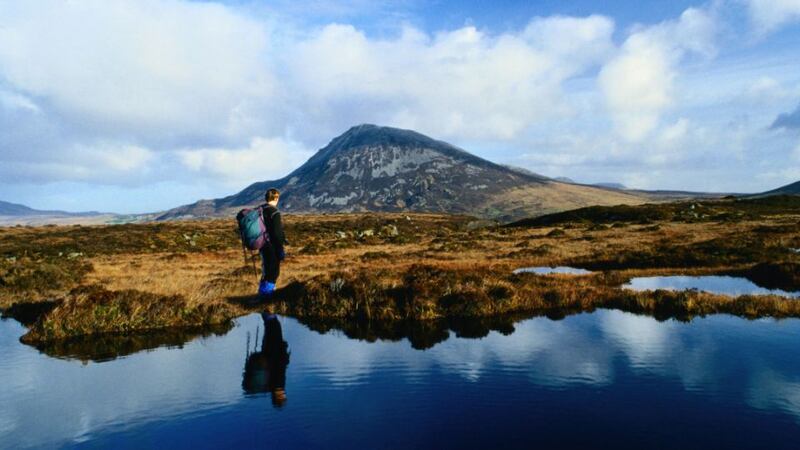Our judges are currently mulling over which spots should make the longlist in The Irish Times Best Place to Go Wild in Ireland contest. To keep your appetite whetted in the meantime, here are two of the nominations we liked. Both are from Donegal, one on the water and one on land. Sea kayaker Eileen Murphy put her love of the islands and sea stacks of Donegal on camera and Sean Hillen's words brought us flesh-eating plants, soaring eagles and pagan wishing stones.
More than 3,800 people entered the competition, which is all about the best places on the island to experience nature. Read about the full range of wild places and experiences, from lake swimming to night kayaking to birdwatching, at irishtimes.com/gowild. The winner will be announced in early June.
Video entry - the Island Group of Owey, Gola, Umphin and Inishinny. Nominated by Eileen Murphy:

----------------------------------------------------------------
Nominated by Seán Hillen:
Flesh-eating plants, soaring eagles, pagan wishing stones – all in a day's work
"Seamus Doohan's reputation had been spoken of highly. That’s how my wife, Columbia, our two small sheepdogs, Siog (‘fairy’ in Irish) and Lugh (who, according to Celtic legend, slew Balor of the Evil Eye) and myself ended up cowering for dear life under the branches of chubby furze bush as hailstones the size of a rabbit’s droppings pummelled down.
The drenching we got, however, was well worth the wetting. That’s how we came to see flesh-eating plants, soaring eagles, Pagan wishing stones, wandering deer and Colmcille’s book, as well as other titbits about the northwest corner of Donegal, known as the Forgotten County.
Seamus’s walks, which include forest, island, hill and beach, range in duration from one to five hours. They traverse places such as Horn Head, Ards Forest Park, Sli an Earagail, Dunlewey Glen, Tory, Innisboffin and Arranmore, as well as the Joey Glover Challenge, a walk from Muckish to Errigal “taking in all the mountains in between.”
Along rolling fields near Lough Altan, Seamus parts some blades of grass. Beneath is a tiny plant with a vivid red head. ‘Devil’s matchstick, or cladonia cristatella,” he says. “And over there, some Devil’s chalices.” Running his fingers over soft lime-green moss, he adds, “Sphagnum. During the First World War they were used as bandages. There are a hundred varieties,” he said, pointing, “including staghorn, club and fern over there. Beside them are bell and ling heather, good for herbal teas. There’s tormentil flowers, natural antiseptic for toothaches. And sundew plants. They’re carnivorous, they emit a sticky gel that traps insects. Then they eat them.”
Beside an old pony and cart track used a hundred years ago to Altan Farm, he stops beside a strange rock formation resembling open pages. "Leabhar cloch Cholm Ciolle, (Colmcille's book of stone). The monk secretly copied a mysterious text. This could be it - magically petrified." Such stories will be the subject of a newly-launched Ireland Writing Retreat (irelandwritingretreat.com) attended by international visitors that Seamus will bring on walks in June.
In the sunshine, the ruins of castle-like structure stand at the head of the lough. A herd of deer dart away while above us two eagles glide effortlessly. Later, behind Gortahork, Seamus, who is training officer of the North West Mountaineering Club, points to two round indentations carved out of bare stone. “Cup or ring marks, prehistoric art,” he says. “Also known as wishing stones in Pagan times. Supposedly the water that gathers here heals warts, thus the Gaeilge name, Tober na bhFáithní (Wart Stone). ” At Ray, he stops at a ruined church, “This is ‘Lag na gCnámh,’ resting place of bones. A massacre occurred here in the 17th century. No-one knows where the bodies are.” In a hillside graveyard outside Falcarragh, he gazes east, “Amazing to think druids long ago in their big, flowing cloaks stood right here with this amphitheater of hills in front of them and prayed to Nature.”















